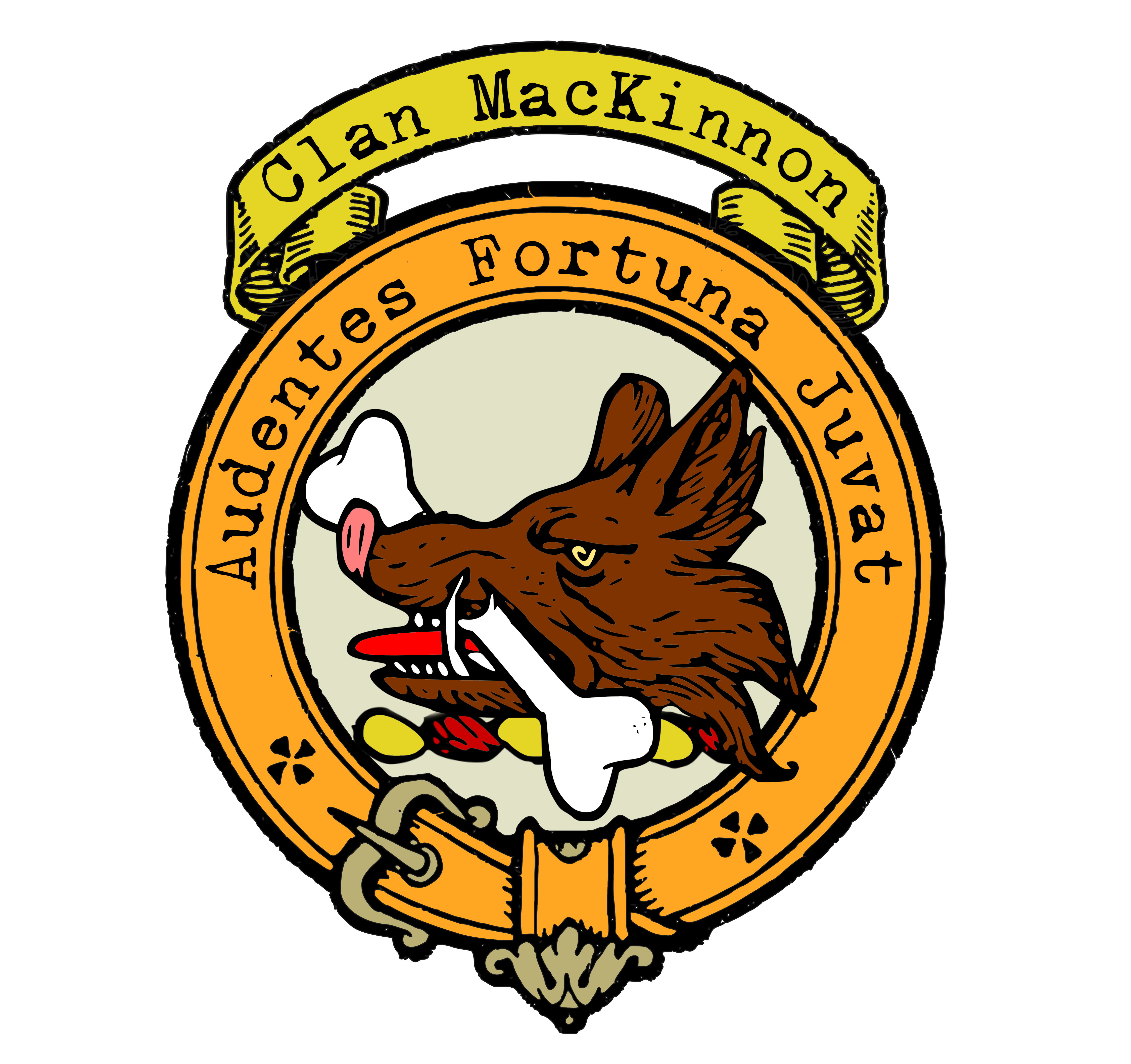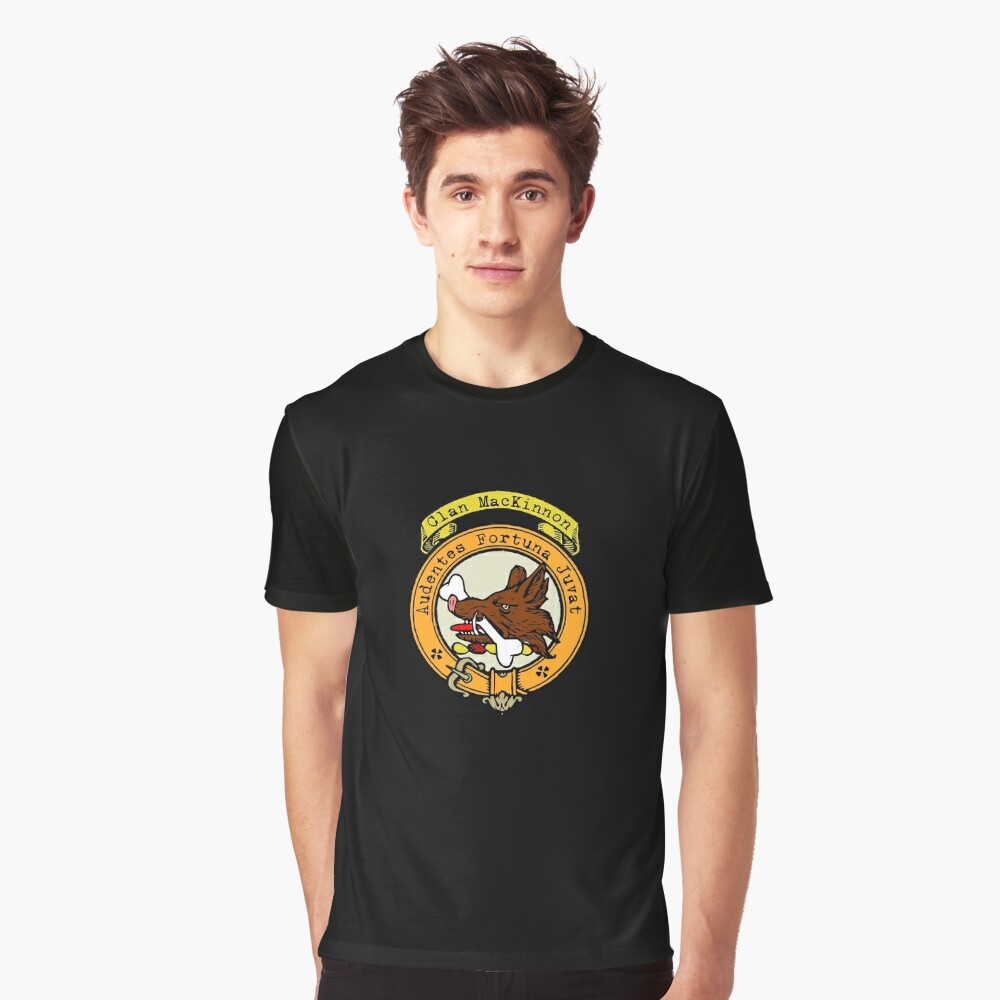Clan MacKinnon
|
|
CREST: A boar’s head erased and holding in its mouth the shank of a deer all Proper MOTTO: Audentes fortuna juvat TRANSLATION: Fortune assists the daring VARIATIONS: Mckinnon |
 Clan Mackinnon traces its roots to Fingon, the grandson of Gregor and a direct descendant of Kenneth MacAlpin, the first King of Scots. The name “Fingon” derives from Gaelic, meaning “fair-born,” signifying the clan’s noble heritage. Their motto, “Cumhnich Bas Alpin” (Remember the death of Alpin), serves as a poignant reminder of their ancestor’s tragic fate. Clan Mackinnon traces its roots to Fingon, the grandson of Gregor and a direct descendant of Kenneth MacAlpin, the first King of Scots. The name “Fingon” derives from Gaelic, meaning “fair-born,” signifying the clan’s noble heritage. Their motto, “Cumhnich Bas Alpin” (Remember the death of Alpin), serves as a poignant reminder of their ancestor’s tragic fate.
During the 9th century, Findanus, the fourth chief of Clan Mackinnon, forged a connection with the Norse by marrying a Norse princess, thus incorporating Dunakin into the clan. Dunakin, also known as Dun Hakon, was a strategic broch—a circular dry-stone tower—that commanded the narrow sound between Skye and the mainland. The resourceful Mackinnons installed a heavy chain across the sound, collecting tolls from passing ships. Their encounter with King Haakon IV of Norway and their involvement in the Battle of Largs in 1263 marked the end of Norse dominance in the region. Fingon, the son of Gilbride, played a significant role in the Celtic church as the Abbot of Iona, a renowned center of Celtic Christianity. Known as the Green Abbot, Fingon lent support to a rebellion against the Lord of the Isles. However, this led to the execution of his brother, Neil. Clan Mackinnon maintained a strong connection to Iona, with several clan members serving as hereditary abbots. John Mackinnon, the ninth chief, held the dual titles of last hereditary abbot and Bishop of the Isles. Clan Mackinnon had a turbulent relationship with the Macleans, resulting in intermittent conflicts. One incident exemplifying their adherence to honor occurred when the Macleans seized Mackinnon lands on Mull. In response, the Mackinnon chief devised a clever plan: he surrounded the Macleans’ feasting hall with firtrees, symbolizing their presence. The Macleans, realizing the precariousness of their situation upon awakening, promptly withdrew from Mackinnon land. Throughout the Jacobite uprisings, Clan Mackinnon remained steadfast in their loyalty to the Stuarts. They fought alongside Prince Charles Edward Stuart during the Battle of Culloden, offering their support and harboring the prince in a cave before aiding his escape to Mallaig. Despite their courage, the Mackinnons faced trials and were declared traitors. Nevertheless, their commitment to the Stuart cause remained unbroken. The lineage of influential figures within Clan Mackinnon continues to shape Scotland’s history. William Mackinnon, a prominent parliamentarian and Member of Parliament, served with distinction for numerous years. Presently, the chief of Clan Mackinnon is Anne Mackinnon, the granddaughter of Sir William Mackinnon, a revered military figure and former director of recruitment during World War I. |
|
Citations:
|
|

Purchase @ Redbubble
Purchase @ Amazon.com
Purchase @ Amazon.co.uk

